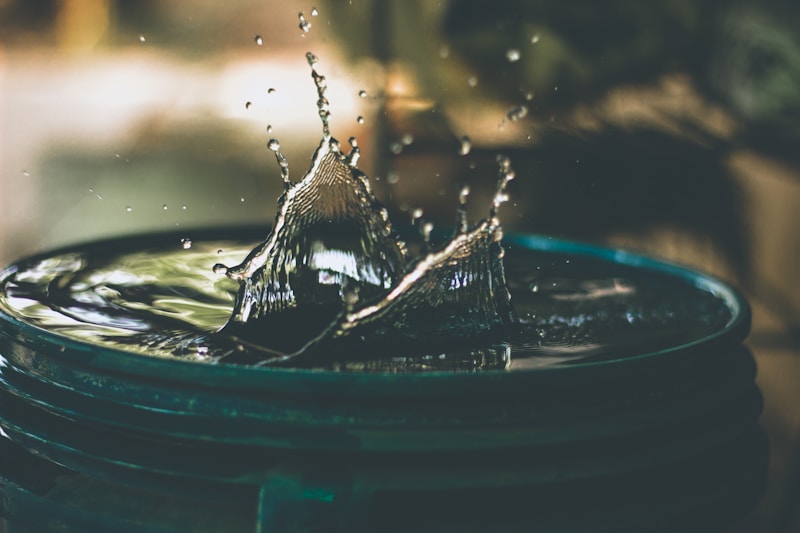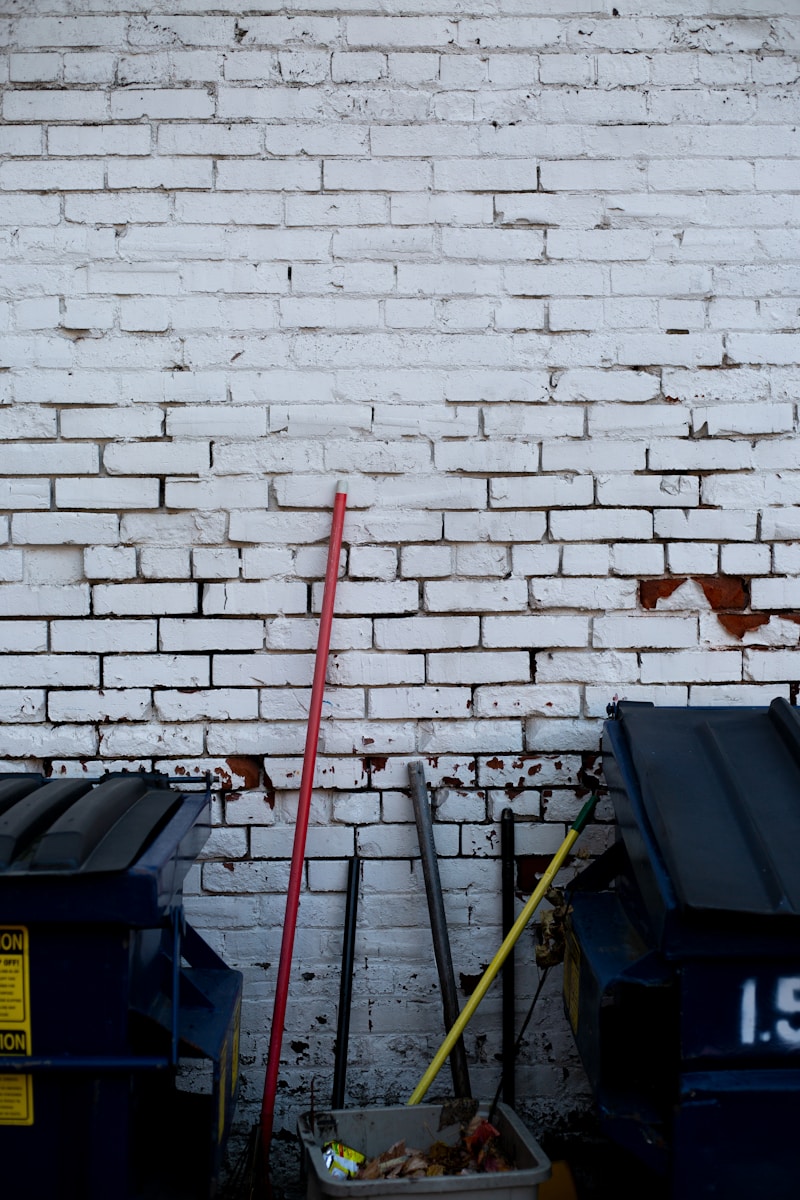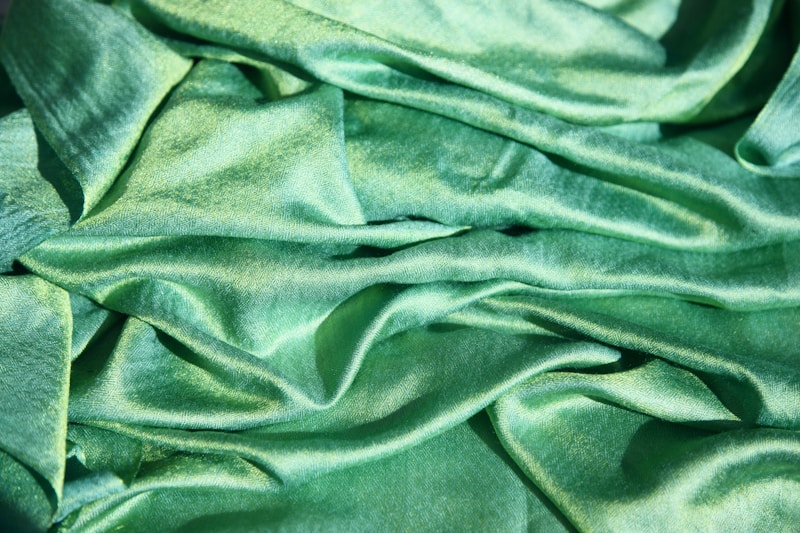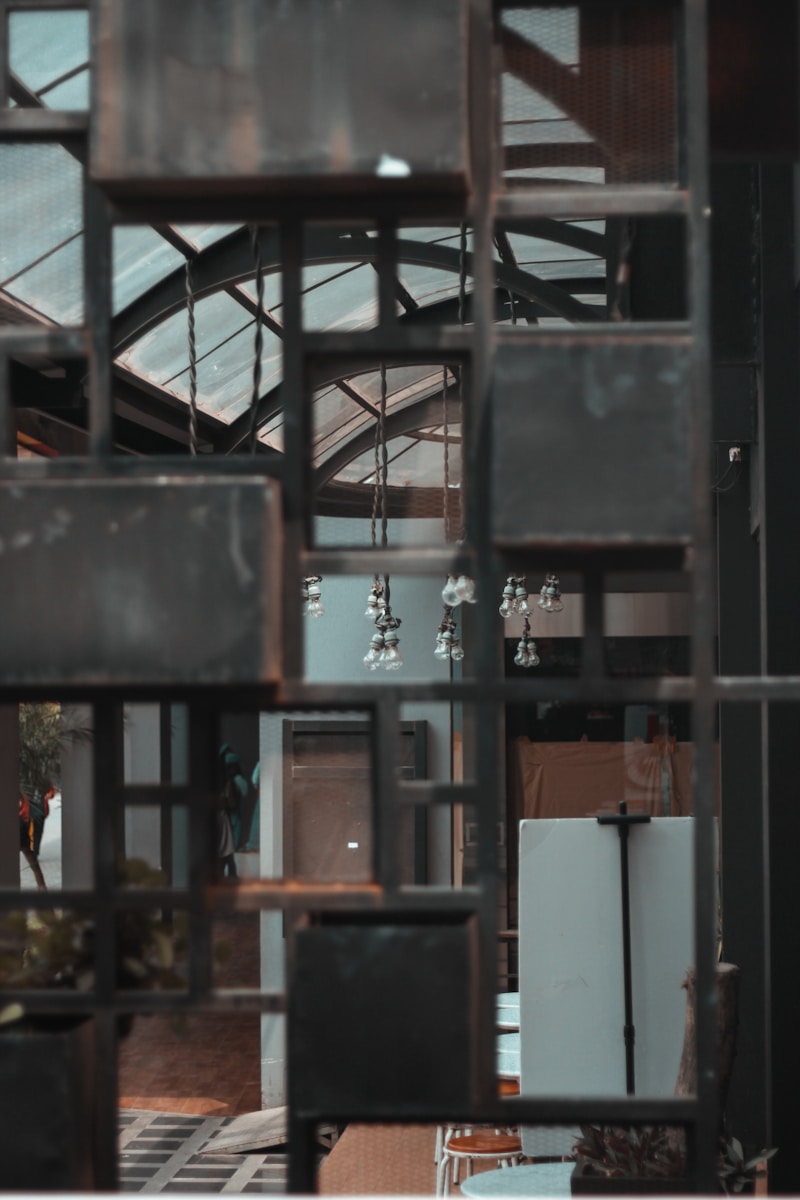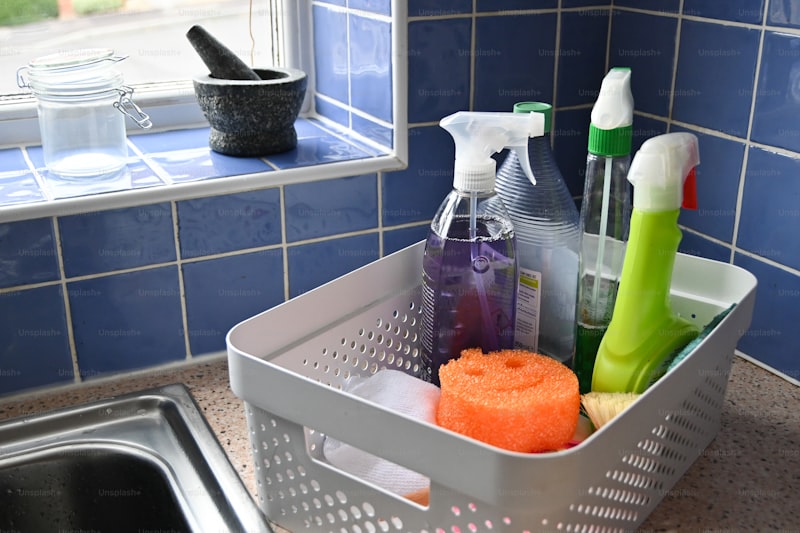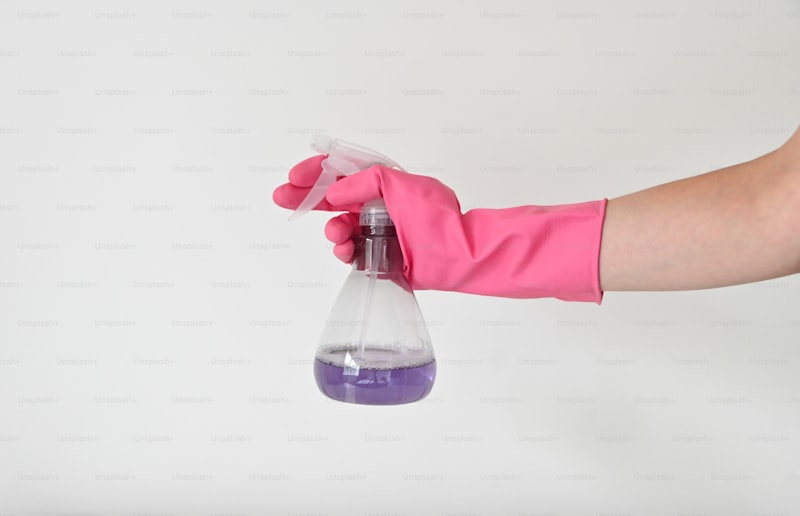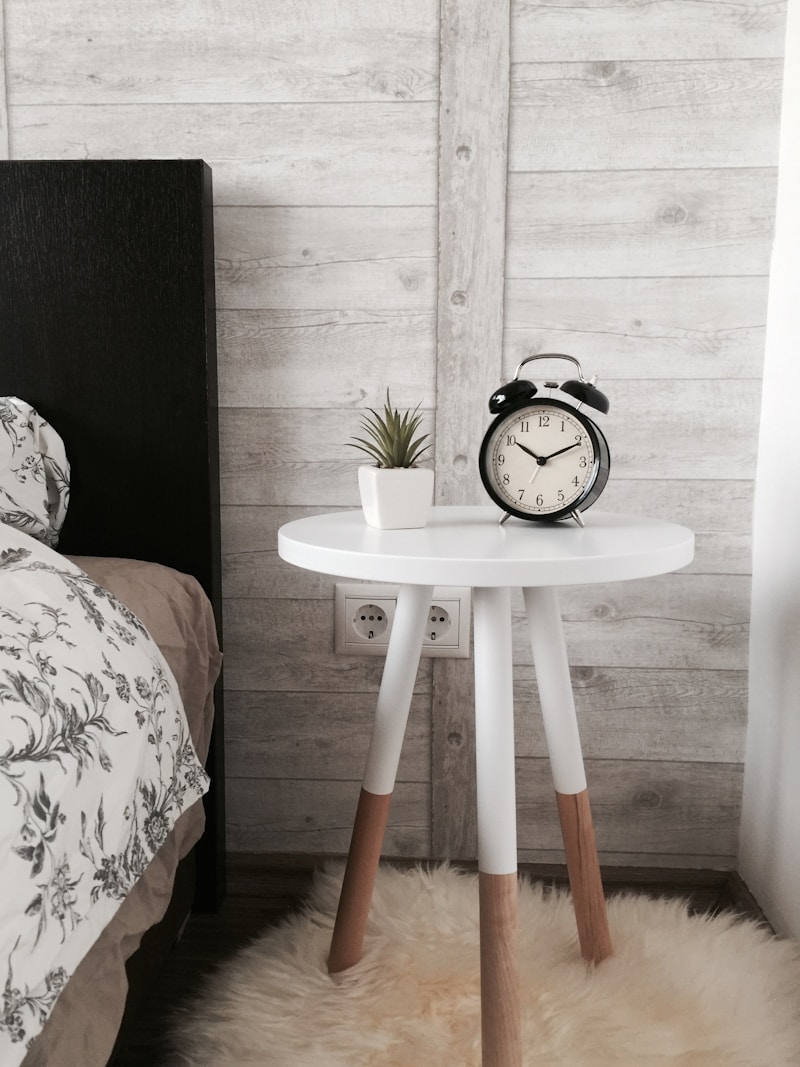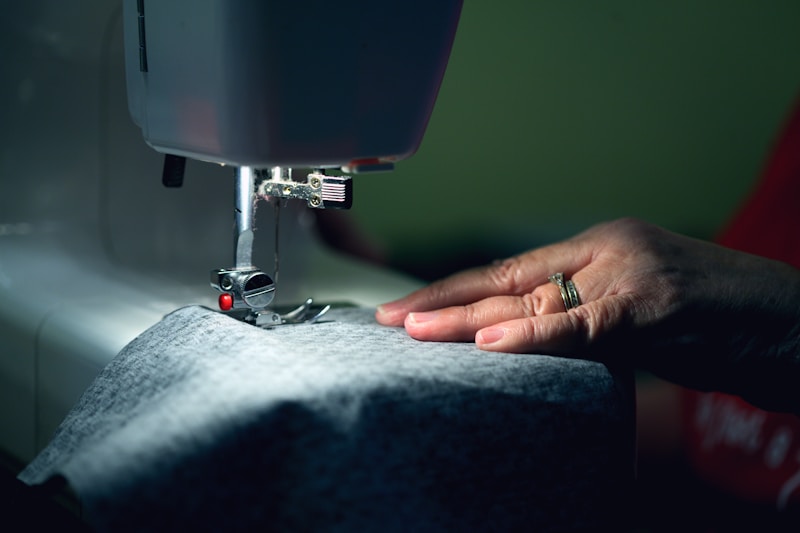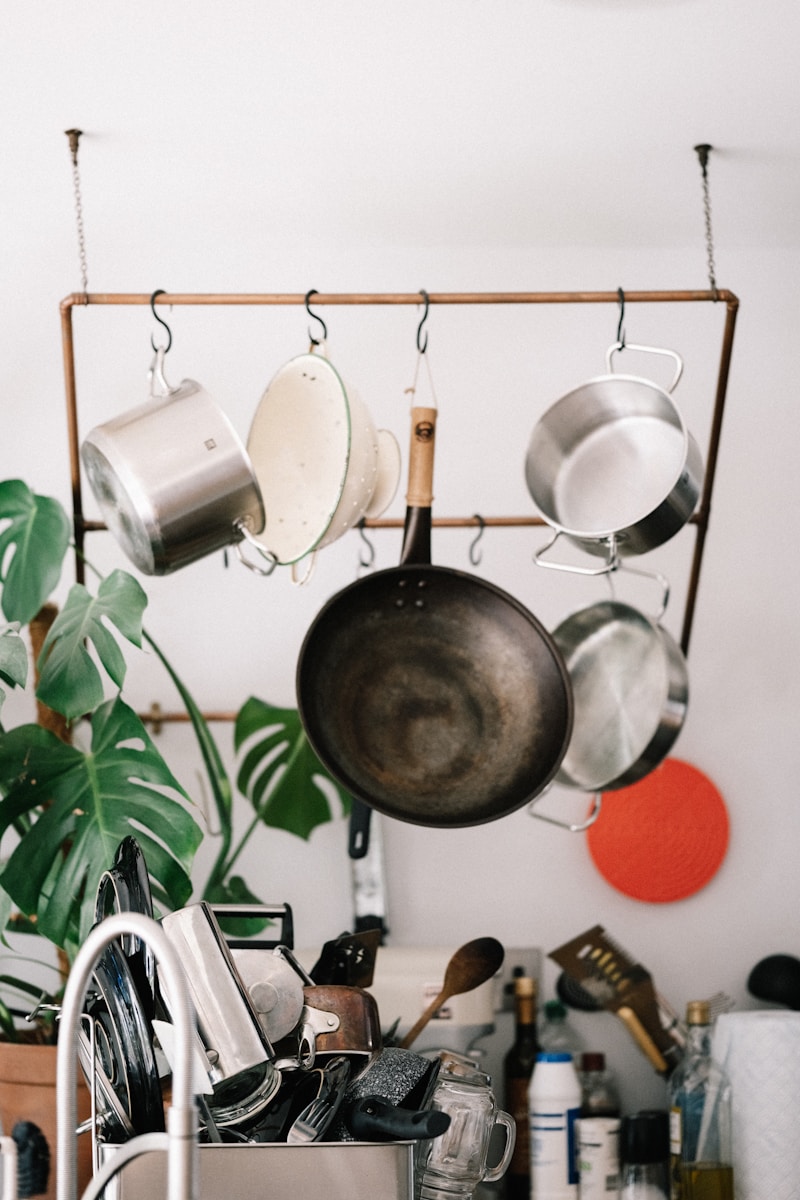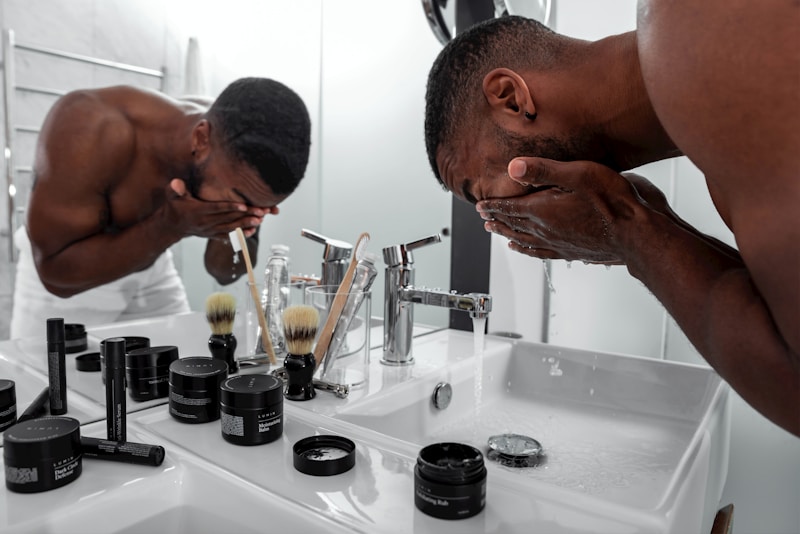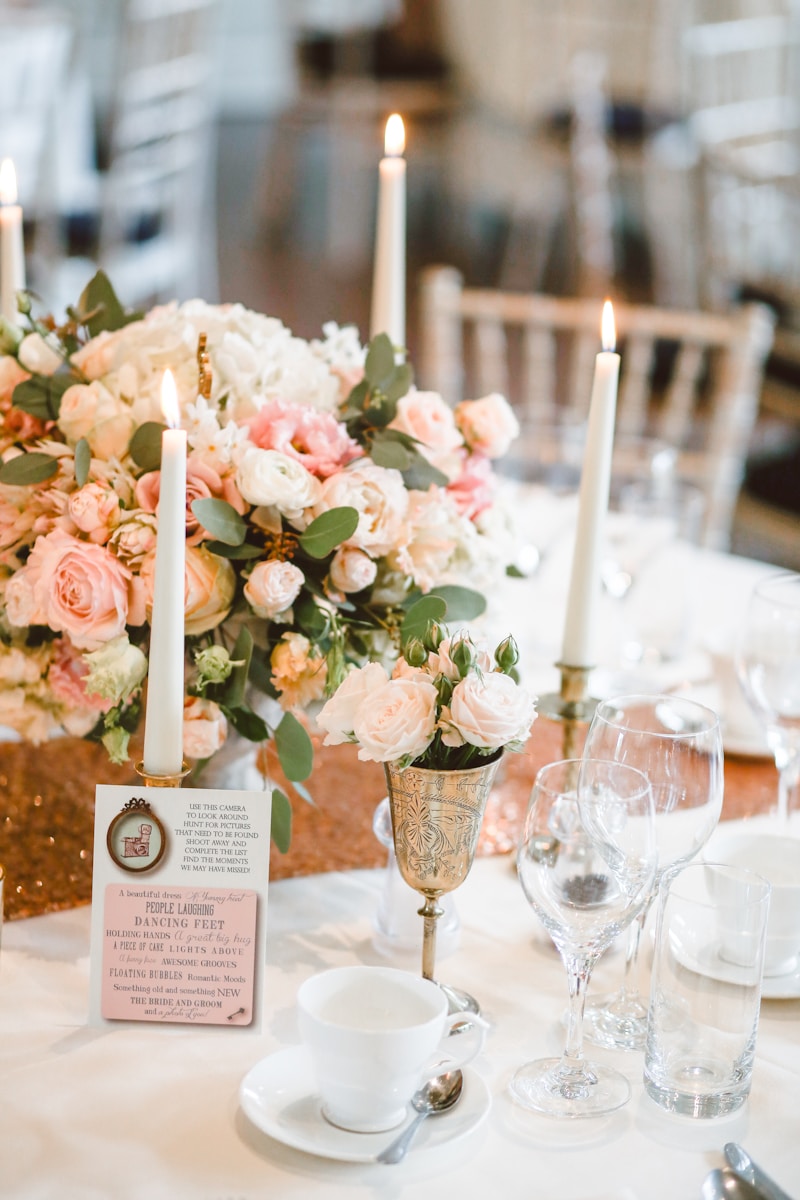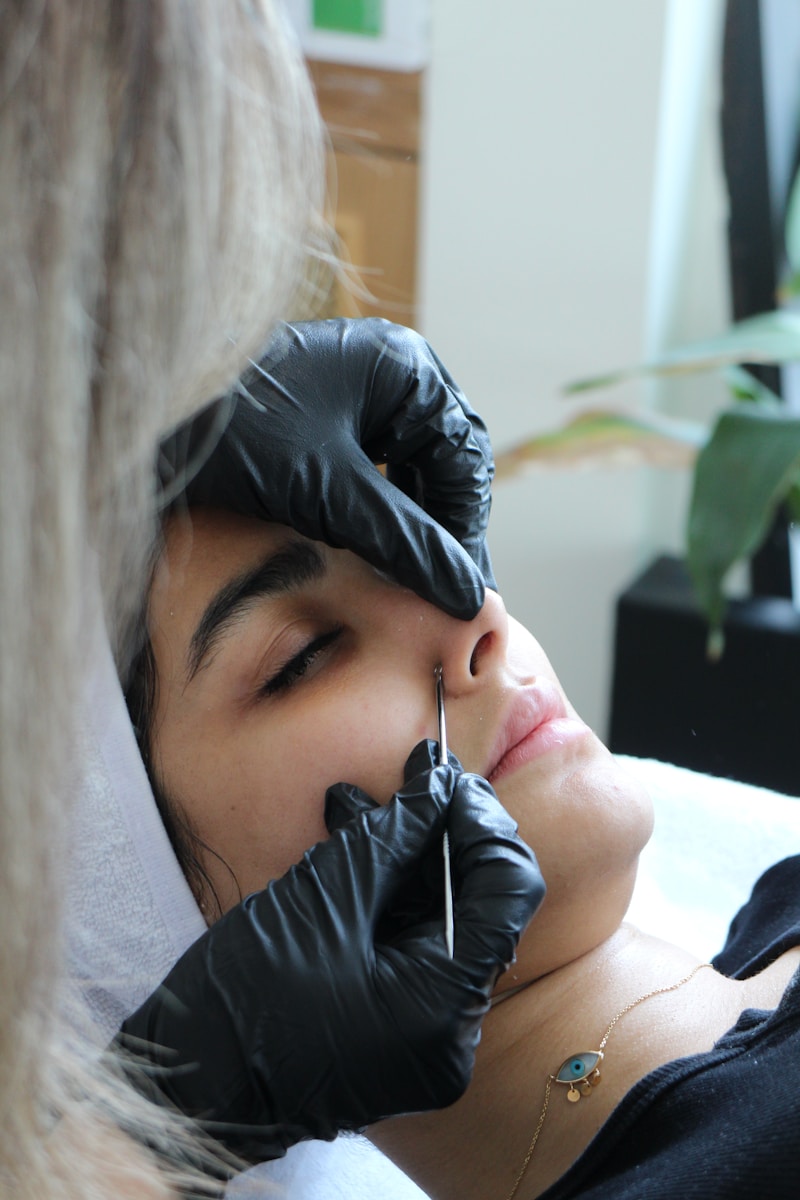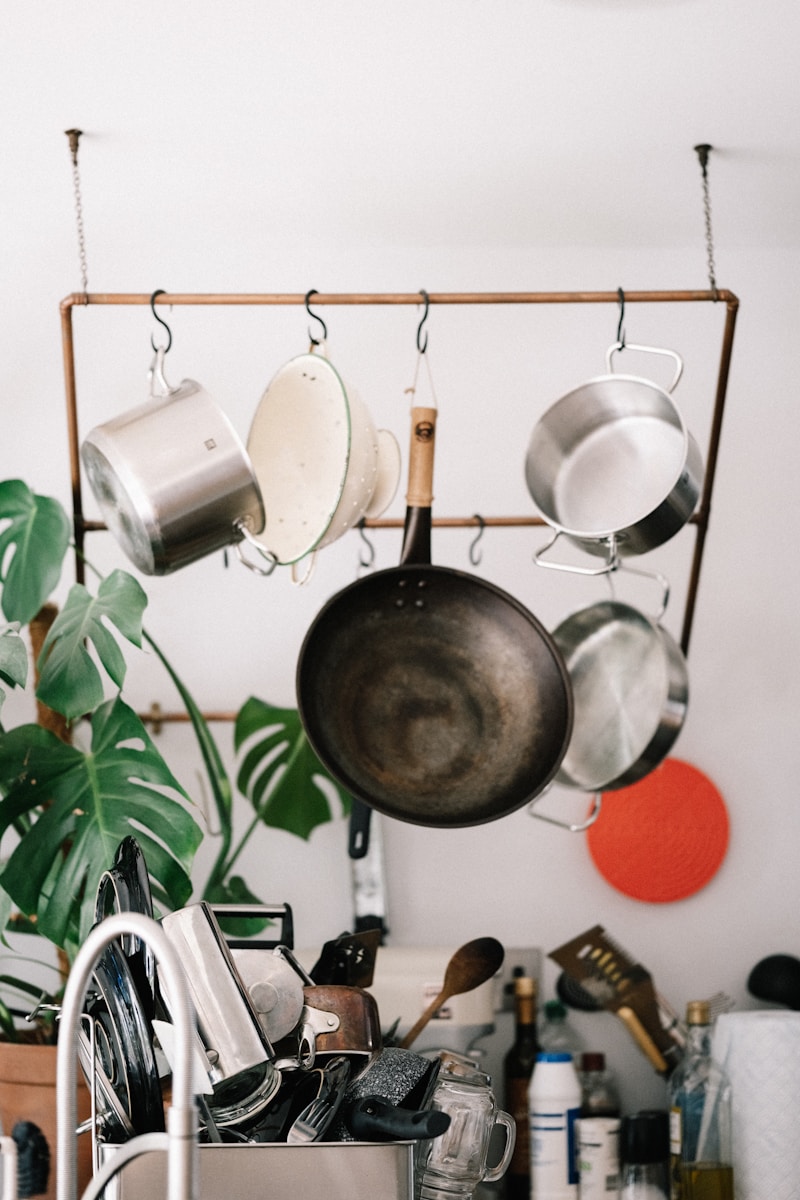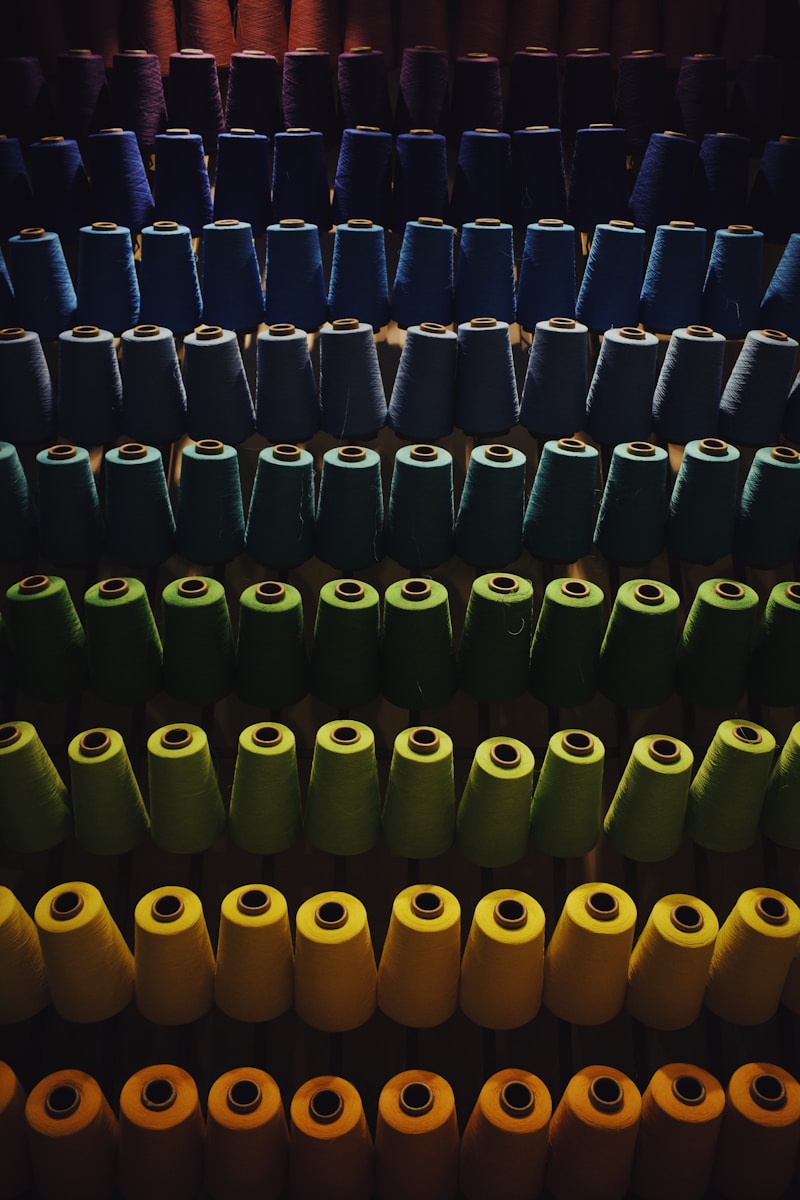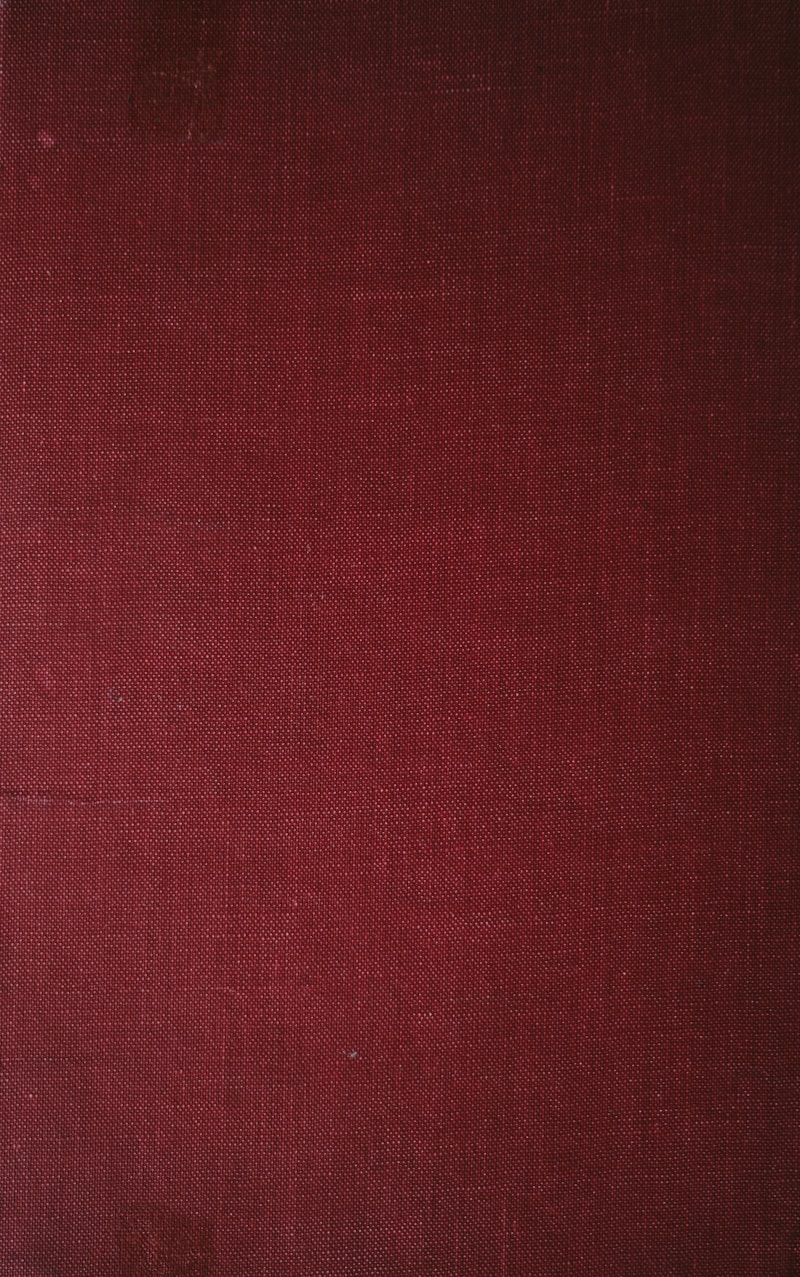Cleaning Frequency Recommendations: Your Ultimate Guide to a Clean and Healthy Home
Understanding Cleaning Frequency RecommendationsKeeping a home clean and organized is essential for both hygiene and peace of mind. However, with busy schedules and endless responsibilities, many people often question how frequently they should clean various areas of their homes. That's where cleaning frequency recommendations come into play. In this article, we will explore recommended cleaning frequencies for different tasks and areas in your home.Why Cleaning Frequency MattersCleaning is not just about aesthetics; it significantly impacts your health and well-being. Regular cleaning helps to eliminate allergens, dust, and bacteria, which can contribute to respiratory issues and other health problems. Additionally, a clean environment can boost productivity and reduce stress. Understanding the recommended cleaning frequencies can help you maintain a clean and inviting home without feeling overwhelmed.Daily, Weekly, Monthly, and Yearly Cleaning TasksWhen it comes to cleaning your home, tasks can generally be categorized into daily, weekly, monthly, and yearly cleaning. Let's take a closer look at what these recommendations entail.Daily Cleaning TasksTaskDurationMake the bed5 minutesWash dishes15-30 minutesWipe kitchen counters5 minutesVacuum high-traffic areas10 minutesGather and dispose of trash5 minutesImplementing a few daily cleaning tasks can significantly enhance the overall cleanliness of your home. Aim to make your bed each morning, wash the dishes after meals, wipe ...
Comprehensive Water Temperature Guidelines for Optimal Comfort and Safety
Water temperature plays a crucial role in various aspects of our daily lives, from bathing and swimming to cooking and drinking. Understanding water temperature guidelines can help ensure safety, comfort, and optimal performance in various activities. This article provides an in-depth look into recommended water temperatures for different scenarios, insights into the importance of temperature control, and tips for maintaining appropriate levels.The Importance of Water Temperature GuidelinesWater temperature can significantly affect our health and well-being. Whether you are running a bath, preparing food, or maintaining a swimming pool, following specific temperature guidelines is essential to prevent potential hazards such as scalding and ensure the best experience.Common Areas Affected by Water TemperatureThere are several areas in our lives where water temperature plays a vital role: Cooking Bathing Swimming DrinkingCooking and Food SafetyWhen it comes to cooking, water temperature is critical for food safety. Water temperature guidelines help ensure that foods are cooked properly to eliminate harmful bacteria. Here are some recommended temperatures for various cooking methods:Cooking MethodRecommended Water TemperatureBoiling100°C (212°F)Poaching70-85°C (160-185°F)Steaming100°C (212°F)Blanching100°C (212°F)Using the appropriate water temperature not only enhances the flavor of your meals but also ensures food safety by killing harmful bacteria that could cause...
The Ultimate Cleaning Items Checklist You Need for an Immaculate Home
Keeping a clean home is essential for both health and happiness. However, achieving that level of cleanliness can sometimes be overwhelming. That’s where a cleaning items checklist comes into play. This comprehensive guide will help you gather the necessary tools and supplies for an effective cleaning routine, ensuring you never miss a spot or item again.What is a Cleaning Items Checklist?A cleaning items checklist is a structured list of all the supplies and tools you might need to effectively clean your home or workspace. It is designed to keep your cleaning tasks organized and ensure that you have everything you need at your fingertips. Whether you're prepping for a deep clean or just a quick tidy up, having a checklist will save time and effort while giving you peace of mind.Why You Need a Cleaning Items Checklist1. Efficiency: A checklist allows you to prioritize tasks, meaning you can clean faster without getting sidetracked.2. Thoroughness: By referring to a checklist, you won’t overlook any important areas or items that need cleaning.3. Cost-Effective: Buying in bulk or only what you need generally leads to savings, and a checklist helps you avoid impulse purchases.4. Reduced Stress: Knowing what to do and having all your items ready reduces anxiety and helps you focus on the task at hand.Essential Cleaning SuppliesWhen creating your cleaning items checklist, consider dividing supplies into various categories for ease of use. You can group them into categories such as...
Ultimate Guide to Protective Garment Bags: Keep Your Clothes Safe and Stylish
IntroductionIn a world where preservation of personal belongings is becoming increasingly important, protective garment bags have emerged as a necessary solution for those looking to safeguard their clothing investments. Whether you are a fashion enthusiast with a collection of luxury garments or simply someone who wants to keep their everyday clothes in pristine condition, this guide will delve into everything you need to know about protective garment bags.What Are Protective Garment Bags?Protective garment bags are specialized storage bags designed to shield clothes from dust, moisture, and pests. They come in various materials, sizes, and styles, catering to diverse needs. Such bags are essential for storing seasonal clothing, long-term garment preservation, and even transporting outfits for travel or special occasions.Types of Protective Garment BagsWhen selecting protective garment bags, it is crucial to consider the type that best fits your requirements. Here are the most common types:TypeMaterialBest ForPlastic Garment BagsPVC, PEVAShort-term storage, travelCanvas Garment BagsCanvas, CottonLong-term storage, protection from dustVinyl Garment BagsVinylWater resistance, visibilityTravel Garment BagsPolyesterTraveling, organizationWhy You Need Protective Garment BagsProtective garment bags are not mere storage solutions; they offer a plethora of benefits that can significantly extend the life and appearance of your clothing:Protection from Dust and Dirt: Garment bags prov...
Explore the Best Preservation Box Options for Your Treasured Items
Preservation Box Options: A Comprehensive GuideWhen it comes to protecting valuable and cherished items, the right preservation box can make all the difference. Whether you are storing heirlooms, collectibles, documents, or textiles, selecting the appropriate preservation box options is crucial to ensure longevity and maintain their condition. This article delves into various preservation box options available in the market, their features, advantages, and how to choose the best one for your needs.Understanding Preservation BoxesPreservation boxes are specialized storage solutions designed to protect items from environmental factors such as light, humidity, dust, and pests. They often come in acid-free materials that prevent deterioration, making them a suitable choice for archival purposes.Key benefits of using preservation boxes include: Protection from physical damage Prevention of moisture accumulation Prohibition of oxidation Keeping items organizedTypes of Preservation Box OptionsThere are various types of preservation boxes to cater to different needs. Below are some popular options: Box Type Best For Features Archival Storage Boxes Documents, Photographs Acid-free, lignin-free, and buffered Jewelry Boxes Jewelry and Watches Soft fabrics, padded compartments Flat Storage Boxes Artwork, Textiles Shallow depth, suited for flat items Specialty Boxes Specific Items (Medals, Books) Custom-fit designs, archival-quality...
Unlocking the Benefits of Safe Cleaning Products for a Healthier Home
Why Choose Safe Cleaning Products?In today's world, the push for sustainable living has never been more significant. One of the essential aspects of this movement revolves around the use of safe cleaning products. These eco-friendly alternatives not only protect the environment but also safeguard the health of your family. As awareness about the harmful chemicals prevalent in conventional cleaning supplies increases, more people are turning to safer, natural solutions to maintain cleanliness and hygiene at home.Understanding Safe Cleaning ProductsSafe cleaning products are typically made from non-toxic, biodegradable materials that do not harm the environment or human health. This category includes a variety of items, such as household cleaners, laundry detergents, and surface disinfectants. Using these products reduces the risk of exposure to toxic substances, making them an excellent choice for households, especially those with children, pets, or individuals with allergies.The Rise of Eco-Friendly Cleaning SolutionsThe demand for safe cleaning products has surged due to increasing awareness about health and environmental issues. Traditional cleaning supplies often contain dangerous chemicals that can lead to respiratory issues and skin irritations. In contrast, eco-friendly cleaners utilize natural ingredients such as vinegar, baking soda, and essential oils. As more consumers prioritize health and sustainability, the cleaning industry adapts, offering innovative and safe o...
Tackling Perfume Stains: A Comprehensive Guide to Keeping Your Fabrics Smelling Fresh
Perfume stains can be a nuisance, especially when they appear on your favorite clothing or upholstery. These stains not only leave an unpleasant mark but can also affect the fragrance and freshness of the items they touch. In this article, we will delve into effective strategies and techniques for tackling perfume stains, ensuring that your fabrics remain pristine and aromatic.Understanding Perfume StainsPerfume contains oils and alcohol that contribute to its scent. When spilled or over-applied, these components can leave noticeable marks on various fabrics. The intensity of the stain can vary based on the type of fabric and the perfume's formulation. Here are a few common types of fabrics that may be affected:Fabric TypeImpact of Perfume StainsCottonAbsorbs perfumes easily, often leaving stains.SilkCan be damaged by alcohol in perfumes; requires special care.WoolMay absorb perfume but often holds odor longer.DenimCan bleach or discolour with certain perfumes.Understanding these impacts can help you determine the best cleaning methods for your specific situation.Initial Steps to TakeWhen faced with a perfume stain, prompt action is essential. Here’s a step-by-step guide to addressing the issue as soon as possible:1. Assess the StainBefore attempting any cleaning methods, evaluate the extent of the stain. Is it a light mark or a heavy spill? This will dictate the cleaning process. Understand the type of fabric and check for any care labels that provide specific cleaning instr...
Mastering the Art of Planning for Alterations: A Comprehensive Guide
Introduction to Planning for AlterationsIn today's fast-paced world, planning for alterations is an essential skill, whether in personal projects, home renovations, or even business adjustments. This article explores the various facets of planning for alterations, the importance of a strategic approach, and how to effectively execute changes to achieve desired outcomes.What Does Planning for Alterations Entail?Planning for alterations involves systematically organizing the changes you wish to implement. It encompasses a myriad of elements, including budgeting, timeline management, and resource allocation. One of the key factors when planning for alterations is to identify the scope of the project clearly. Understanding what needs to be altered can lead to a smoother transition and ultimately, greater satisfaction with the final result.The Importance of Setting Clear ObjectivesBefore diving into any alterations, it is vital to set clear and achievable objectives. Will you be renovating your living room, modifying your business strategy, or perhaps updating your wardrobe? Having a clear goal in mind will guide your planning process. For instance, if your objective is to renovate your home, you'll need to consider the following:BudgetDesign preferencesDesired timelineContractor or DIY optionsSteps for Effective Planning for AlterationsHere is a step-by-step guide to help you navigate the planning process for alterations:StepDescription1. Define the ScopeIdentify what alterations...
Ultimate Guide to Gown Care for Travel: Ensuring Your Dress Stays Flawless
Traveling with your gown can be intimidating, especially if you want to maintain its pristine condition. Whether you’re attending a wedding, a prom, or a formal gala, understanding the best practices for gown care is essential. In this comprehensive guide, we’ll explore tips, techniques, and strategies that can make your journey easier while ensuring your gown remains flawless. We will also address common concerns related to gown care for travel, offer practical solutions, and provide insights into various related questions.Why Gown Care is Crucial for TravelYour gown is more than just a piece of clothing; it's often a significant investment and holds sentimental value. The fabric, intricate designs, and detailing that make your dress unique are highly susceptible to damage during transit. Here are some reasons why proper gown care is vital when traveling: Prevention of Creases and Wrinkles: Gowns, especially those made with delicate fabrics, can easily wrinkle. Proper care can help mitigate this. Protection from Stains: Accidents can happen, and being prepared can save your gown from unexpected marks. Ease of Transport: Knowing how to pack your gown effectively can make traveling less stressful.Preparing Your Gown for TravelBefore you even think about packing your gown, you should prepare it properly. Here are some essential steps to follow:1. Clean Your GownBefore traveling, ensure your gown is clean. If it has been worn, take it to a professional dry cleaner speci...
Understanding Anticipating Fabric Shrinkage: A Comprehensive Guide for Textile Enthusiasts
Fabric shrinkage is a common concern for those working in textiles, whether you're a professional tailor, a DIY enthusiast, or just a casual clothing buyer. When it comes to anticipating fabric shrinkage, understanding the factors that contribute to this phenomenon can save you time, effort, and money. In this article, we will explore various aspects of fabric shrinkage, outline effective strategies for preventing it, and answer some frequently asked questions related to this topic. We will also provide insights that can help you make informed decisions about your fabric choices and laundry practices.What is Fabric Shrinkage?Fabric shrinkage refers to the reduction in the size of a fabric or garment after it has been washed or dried. This change in size can often occur due to a variety of factors, including the type of fiber used, the manufacturing process, and the way the fabric is cared for during cleaning. Understanding these underlying causes is crucial for anyone who wants to anticipate fabric shrinkage and take appropriate measures.Common Causes of Fabric ShrinkageThere are several common causes of fabric shrinkage:CauseDescriptionFiber TypeCertain fibers, like cotton and wool, are more prone to shrinkage due to their natural characteristics.Manufacturing ProcessFabrics that undergo extensive finishing processes may shrink more than those made with minimal treatment.Washing ConditionsHigh temperatures and aggressive detergents can exacerbate shrinkage.Drying MethodsUsin...
Essential DIY Cleaning Tips: Transform Your Space with Simple Solutions
Cleaning your home can often feel like a daunting and time-consuming task. However, with some handy DIY cleaning strategies, you can streamline the process and achieve remarkable results without breaking the bank on commercial cleaning products. This comprehensive guide provides you with practical advice on DIY cleaning, ensuring your living space stays fresh, inviting, and hygienic.Understanding the Benefits of DIY CleaningBefore diving into specific cleaning techniques, it's crucial to understand why opting for DIY cleaning methods can be advantageous: Cost-Effective: DIY cleaning solutions often require common household ingredients that are inexpensive compared to store-bought alternatives. Eco-Friendly: Using natural ingredients reduces chemical waste in the environment, making your home safer for you and your family. Customization: You can tailor your cleaning recipes to suit specific needs or preferences, making them more effective for unique situations. Health Benefits: Many commercial cleaners contain harsh chemicals that can affect your health. DIY cleaners help reduce exposure to these harmful substances.Key DIY Cleaning IngredientsTo make the most out of your DIY cleaning projects, keep the following versatile ingredients on hand:IngredientUsesBaking SodaDeodorizing, scrubbing surfaces, stain removalWhite VinegarDisinfecting, breaking down stains, odor neutralizingCastile SoapAll-purpose cleaner, dish soap, laundry detergentEssential OilsAdding scents, ...
Understanding Fabric Care Labels: A Comprehensive Guide
Decoding Fabric Care Labels for Optimal Clothing MaintenanceWhen it comes to maintaining our clothes, understanding fabric care labels is crucial. These seemingly simple tags provide essential information on how to wash, dry, iron, and care for different fabrics. This article aims to demystify these labels, ensuring that your favorite garments last longer and retain their original appeal.Why Fabric Care Labels MatterFabric care labels serve a dual purpose: they guide consumers on the correct way to care for their clothing items, while also helping manufacturers comply with regulations. Using proper care techniques can prevent damage, fading, and shrinkage, ultimately saving you money by prolonging the life of your garments.Key Components of Fabric Care LabelsMost fabric care labels include symbols that communicate various care instructions. Understanding these symbols is vital for proper maintenance. Here are the main components you might find on a fabric care label:SymbolDescription🧼Machine Wash☀️Drying Instructions🧴Bleaching Instructions🕴️Ironing Instructions🏷️Professional Textile CareInterpreting the Washing SymbolsWashing symbols can be indicated as a tub filled with water. This symbol will have additional markings to give details about temperature and washing techniques. Here’s a breakdown of common washing instructions you might find:Machine Wash (30°C, 40°C, 60°C): These numbers indicate the maximum washing temperature in degrees Celsius. Lower temperatures are often s...
Understanding Insurance for Haute Couture: A Comprehensive Guide
When it comes to haute couture, the world of fashion is a unique blend of artistry, creativity, and, unfortunately, risks. As a designer, boutique owner, or fashion enthusiast, understanding insurance for haute couture is paramount. This article will explore the ins and outs of haute couture insurance, addressing essential considerations, common questions, and valuable insights to help protect your valuable creations.What is Haute Couture?Haute couture translates to "high sewing" in French and refers to the creation of exclusive, custom-fitted clothing made from high-quality, expensive fabric and sewn with extreme attention to detail. These garments are not just clothing; they are works of art that often come with a hefty price tag and are subject to various risks, making insurance essential. As haute couture is often made for individuals, the bespoke nature and intricate designs can significantly elevate the risk of loss or damage.The Importance of Insurance for Haute CoutureLuxury garments face a multitude of risks, including theft, damage, and loss during transport, or even ruin during fittings. Therefore, having a robust insurance policy tailored to haute couture is crucial. Here are some reasons why:Protection Against Theft: High-value garments are often targeted by thieves. Insurance can help mitigate financial losses.Coverage for Damage: Accidental spills, rips, or tears during fashion shows or fittings can ruin a piece. Insurance offers peace of mind.Transportation Ri...
Essential Guide to Wedding Dress Repair Services: Preserve Your Dream Dress
Understanding Wedding Dress Repair ServicesYour wedding dress is more than just a garment; it symbolizes love, commitment, and the beginning of a new chapter in your life. However, wear and tear can often affect even the most cherished wedding gowns, making wedding dress repair services essential for ensuring your dress remains in pristine condition. This article will explore various facets of wedding dress repair services, helping you understand how to navigate this important aspect of wedding planning.Why Consider Wedding Dress Repair Services?Many brides invest considerable time and money into their wedding dresses, making it crucial to preserve their beauty and integrity. Wedding dress repair services offer a variety of benefits: Restoration: Repair services can restore the original beauty of a wedding dress, addressing issues like tears, stains, or fading. Custom Adjustments: Some brides may need to adjust their dresses to achieve the perfect fit, especially if body sizes change before the wedding day. Emergency Repairs: For last-minute emergencies, repair services can quickly resolve issues to ensure you're ready for the big day.Common Types of Wedding Dress RepairsWedding dress repair services encompass a wide range of repairs. Below are some common types:Type of RepairDescriptionTear RepairFixing any tears or rips in the fabric to restore its look.Hem AdjustmentsShortening or lengthening the hemline for a perfect fit.Button ReplacementReplacing missing or bro...
Mastering the Art of Dealing with Dirt and Mud: Tips and Techniques
Understanding the Challenges of Dirt and MudDealing with dirt and mud is an inevitable part of life for many people, especially those who enjoy outdoor activities or live in rural areas. Whether it’s managing the inevitable mess after a rainy day or preparing for seasonal changes, understanding how to tackle dirt and mud is crucial. In this article, we'll explore effective strategies for dealing with these pesky substances, offering tips that can help you maintain cleanliness and order in your environments.The Impact of Dirt and Mud on Daily LifeDirt and mud can be more than just a nuisance; they can affect our health, our home, and our daily activities. For instance:Health Risks: Mud can harbor allergens, bacteria, and other pathogens.Home Maintenance: Dirt can damage flooring and require regular cleaning.Outdoor Activities: For outdoor enthusiasts, mud can hinder performance in sports or hiking.Why is it Important to Control Dirt and Mud?Controlling dirt and mud is not merely about aesthetics; it’s about creating a safe and comfortable environment. Unmanaged dirt can lead to slip hazards, allergies, and even long-term damage to your property. Proper measures can significantly reduce these issues, providing a cleaner and more enjoyable living space.How to Tackle Dirt and Mud EffectivelyThere are various methods and techniques you can employ to effectively manage dirt and mud in your surroundings. Below are some of the most effective strategies:MethodDescriptionFootwear Manag...
Debunking Gown Cleaning Myths: What You Need to Know
Understanding Gown Cleaning MythsWhen it comes to maintaining the elegance and quality of your bridal or formal gown, there are numerous myths and misconceptions surrounding gown cleaning. With the wedding and formal event industries booming, the importance of proper gown care cannot be overstated. This article aims to clarify these myths and provide accurate information to ensure your gown maintains its pristine condition for years to come.Common Myths About Gown CleaningMany people are misled by common myths about how to care for their gowns. Let's explore some of these prevalent myths:MythTruth1. You should wash your gown in a regular washing machine.Most gowns are made from delicate fabrics that can easily be damaged. Professional cleaning is recommended.2. Gowns can be cleaned with bleach.Bleach can destroy the fabric and color of your gown. Special gown cleaners use safer alternatives.3. You can iron your gown yourself.High heat can scorch delicate fabrics. Always steam clean or have it professionally pressed.4. It’s fine to store your gown in a plastic garment bag.Plastic can trap moisture and mold. Use a breathable fabric bag for storage.The Importance of Professional CleaningBrides and individuals often mistakenly think they can easily clean their gowns at home. However, professional gown cleaning is essential for various reasons:Expert Care: Professionals know the specific requirements of various fabrics and can tailor their cleaning methods accordingly.Stain Remova...
Revisiting Care Instructions: A Comprehensive Guide to Maintaining Your Belongings
Why Revisiting Care Instructions is Crucial In our fast-paced lives, we often overlook the importance of care instructions. These guidelines are essential for maintaining the quality and longevity of our belongings, whether they are home appliances, clothing, or furniture. This article aims to highlight why revisiting care instructions is not just beneficial but necessary.The Importance of Following Care InstructionsCare instructions provide detailed information on how to best maintain an item, ensuring that it serves its purpose effectively and lasts a long time. Here are some of the primary reasons why you should revisit care instructions: Prevention of Damage: Ignoring care instructions can lead to irreparable damage.Enhancing Longevity: Regular adherence to care instructions can significantly extend the lifespan of your belongings.Maintaining Appearance: Proper care ensures that items look good and remain functional.Types of Care InstructionsCare instructions can vary widely depending on the type of item. Here are some common categories:Item TypeCommon Care InstructionsClothingWashing, drying, ironing, and storage tipsElectronicsPowering off, cleaning, storage, and handling precautionsFurnitureCleaning methods, polishing, and maintenance suggestionsAppliancesRegular maintenance and troubleshooting tipsCommon Mistakes in Following Care InstructionsEven with the care instructions in hand, people often make mistakes. Here are some of the most common errors to avoid:Ignoring...
Unlocking the Potential: Consulting Fabric Specialists for Your Textile Needs
When it comes to the world of textiles, the expertise of consulting fabric specialists can be a game-changer. Whether you're a designer, a manufacturer, or a retailer, understanding the intricacies of fabric selection, production methods, and market trends is essential for success. In this article, we will delve into what consulting fabric specialists do, why they are invaluable, and how you can leverage their expertise to enhance your business strategy.The Role of Consulting Fabric SpecialistsConsulting fabric specialists are professionals who possess in-depth knowledge about various types of fabrics, their properties, and applications. They serve multiple purposes across different sectors, including:1. In-Depth Fabric KnowledgeConsulting fabric specialists have extensive knowledge about a wide range of fabrics, including natural fibers like cotton, wool, and silk, as well as synthetic materials such as polyester and nylon. They can provide insights into the functional and aesthetic qualities of each fabric type, helping businesses make informed choices based on their project requirements.2. Custom Fabric SolutionsEvery project comes with its unique challenges and requirements. Fabric specialists can assist in developing custom fabric solutions tailored to specific needs, whether it's creating a fabric with certain color fastness, texture, or durability. This can be particularly useful for businesses looking to differentiate their products in a crowded marketplace.3. Market ...
Unlock the Secrets: Long-lasting Freshness Tips for Your Food
In today’s world, where healthy eating and sustainability are at the forefront of many people’s minds, maintaining the freshness of food for as long as possible has become an important topic. Whether you're a busy professional, a parent juggling multiple responsibilities, or simply someone who wants to reduce waste, understanding how to keep your food fresh can save you money and contribute to a healthier lifestyle. In this article, we'll explore various long-lasting freshness tips that you can implement in your kitchen, along with common questions surrounding food preservation. The Science Behind Food Freshness The freshness of food is primarily determined by its exposure to air, moisture, temperature, and light. Most foods have a certain shelf life, which can be extended through proper storage techniques. Here are some factors that contribute to food spoilage: Oxygen: Exposure to air causes oxidation, which can lead to spoilage and nutrient loss. Moisture: Too much moisture can encourage mold growth, while too little can lead to dehydration. Temperature: Storing food at the right temperature is crucial for prolonging its shelf life. Light: Exposure to light can reduce the quality and freshness of food. Essential Long-lasting Freshness Tips Here are some effective tips that you can implement to ensure your food stays fresh for a longer period: 1. Proper Storage Techniques Storing food in appropriate containers is essential. Invest in good-qual...
Understanding the Reapplication of Fabric Protectors: A Comprehensive Guide
Exploring the Importance of Fabric ProtectorsFabric protectors have become integral to maintaining the longevity and appearance of textiles in our homes. Whether it's upholstered furniture, carpets, or clothing, these protectors are designed to shield fabrics from spills, stains, and everyday wear and tear. However, with time, the effectiveness of these protectors diminishes, leading to the need for reapplication. In this article, we will delve into the nuances of the reapplication of fabric protectors, exploring why it's necessary, how to do it correctly, and the benefits involved.Why Reapplication of Fabric Protectors is EssentialLike any protective coating, fabric protectors wear off due to various factors, including exposure to sunlight, frequent cleaning, and general use. Understanding why reapplication is crucial can help you preserve your fabrics effectively.1. Maintains AestheticsReapplying fabric protectors helps maintain the original appearance of your fabrics. Over time, dirt, grime, and spills can accumulate and cause discoloration or staining. By renewing the protective layer, you can minimize these risks.2. Enhances DurabilityFabrics without protection are more prone to wear and tear. By reapplying fabric protectors, you reinforce the fabric's resilience, extending its lifespan considerably.3. Saves Costs in the Long RunInvesting in fabric protectors and reapplying them regularly can save you money. It prevents costly repairs or replacements of furniture and clo...
